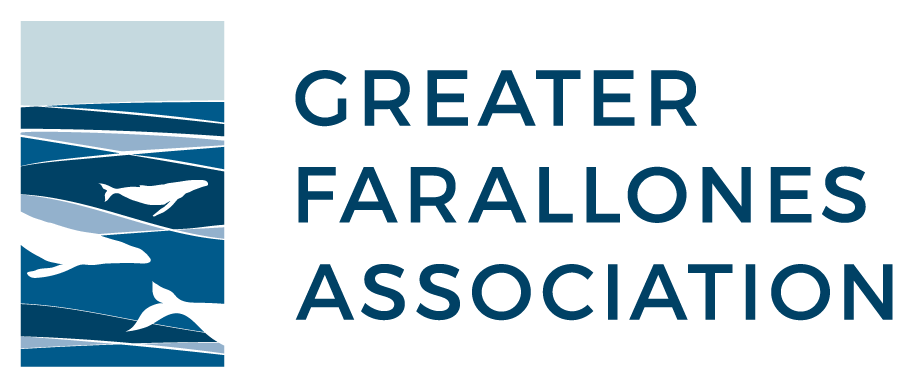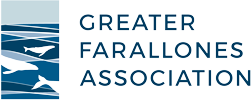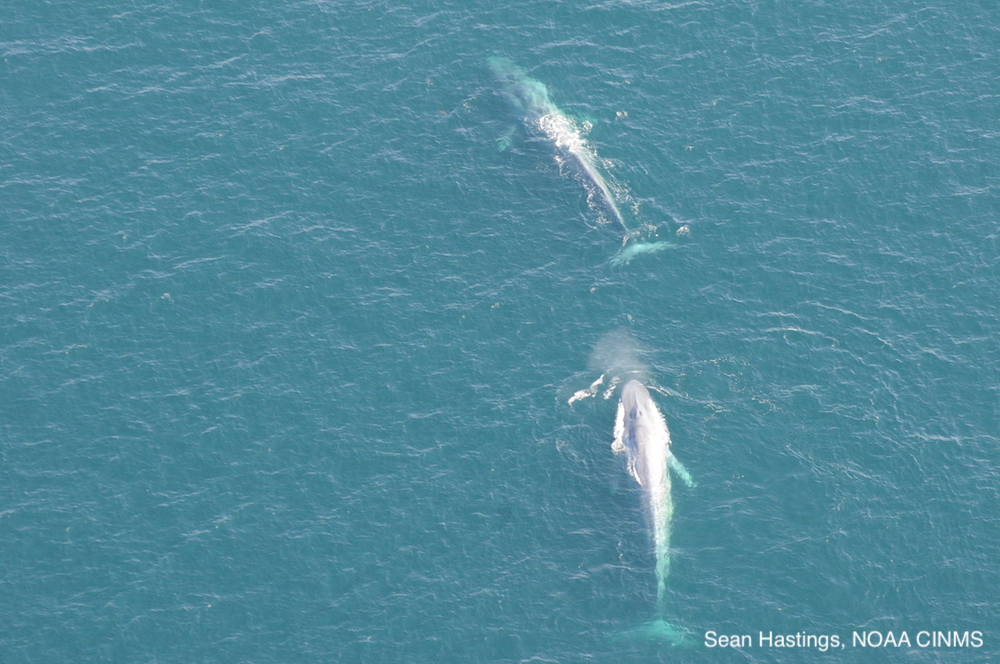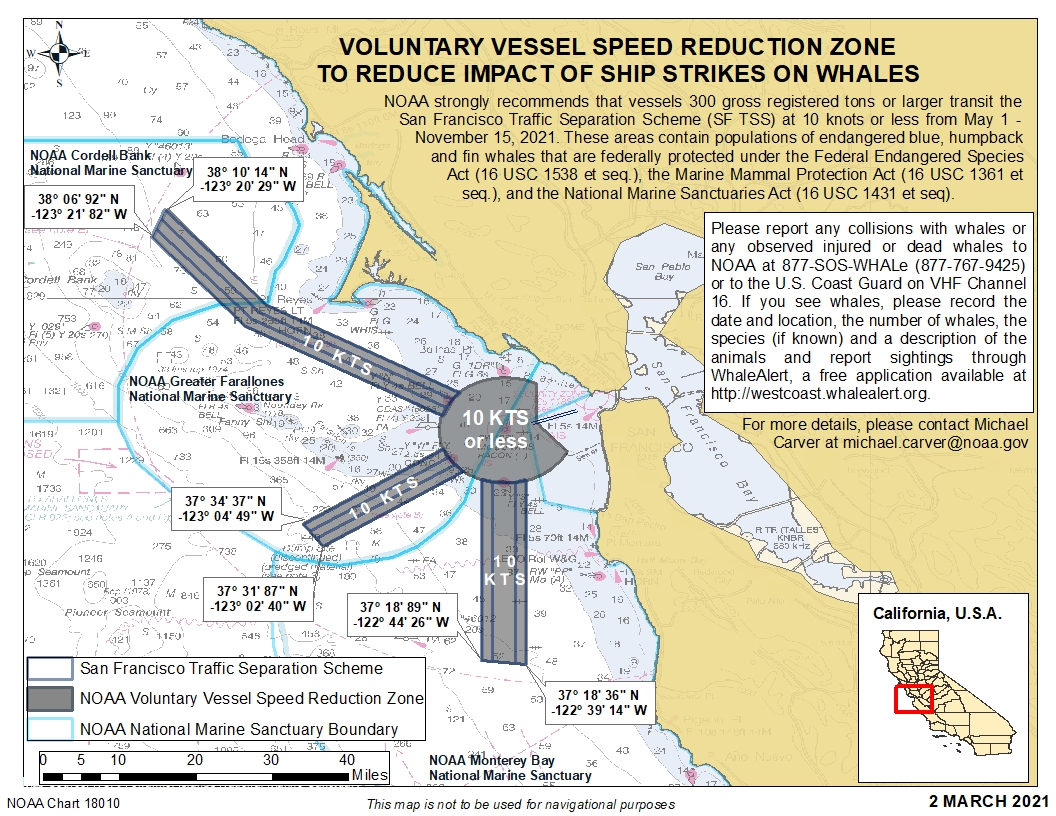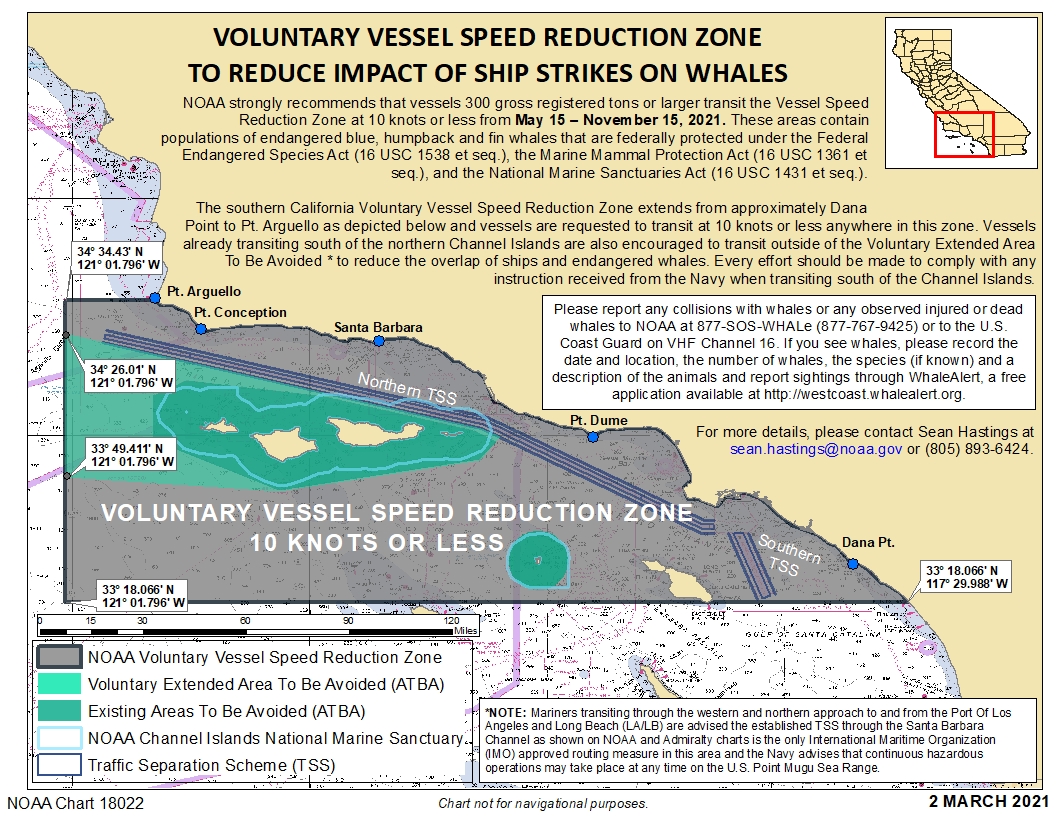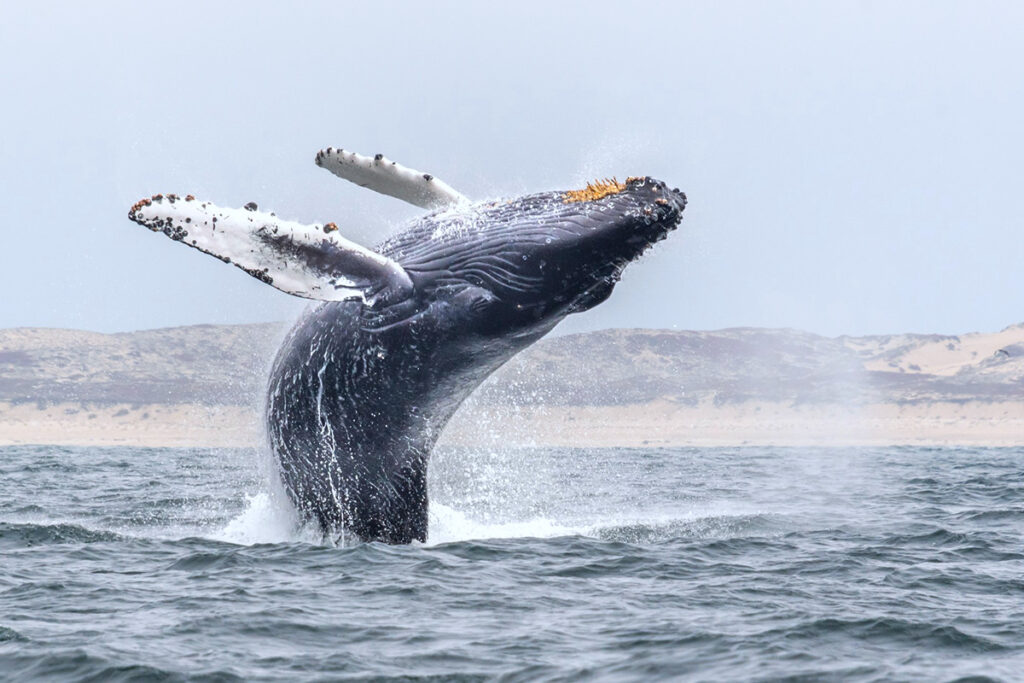Reducing the Risk of Ship Strikes on Endangered Whales
California is home to seasonal feeding grounds and known aggregation areas for many species of endangered large whales, including blues, fins, and humpbacks. Also at home in California’s waters are large commercial vessels, thousands of which transit these biologically-rich areas every year heading to and from the state’s busy ports. While this shipping activity brings goods, products, and economic exchange, it also brings adverse impacts to large whale populations, including in the form of ship strikes.
Ship strikes are a major threat to large whales around the world and to the recovery of endangered blue, fin, and humpback whales that frequent the U.S. west coast. There were 70 recorded incidents of ship strikes on large whales (including grays and minkes) and 49 on endangered species of large whales in California from 2007–2020, and researchers estimate that these observed and reported incidents represent a small percentage of the total number of ship strikes occurring since most incidents with large vessels go unnoticed and most whales sink after death.
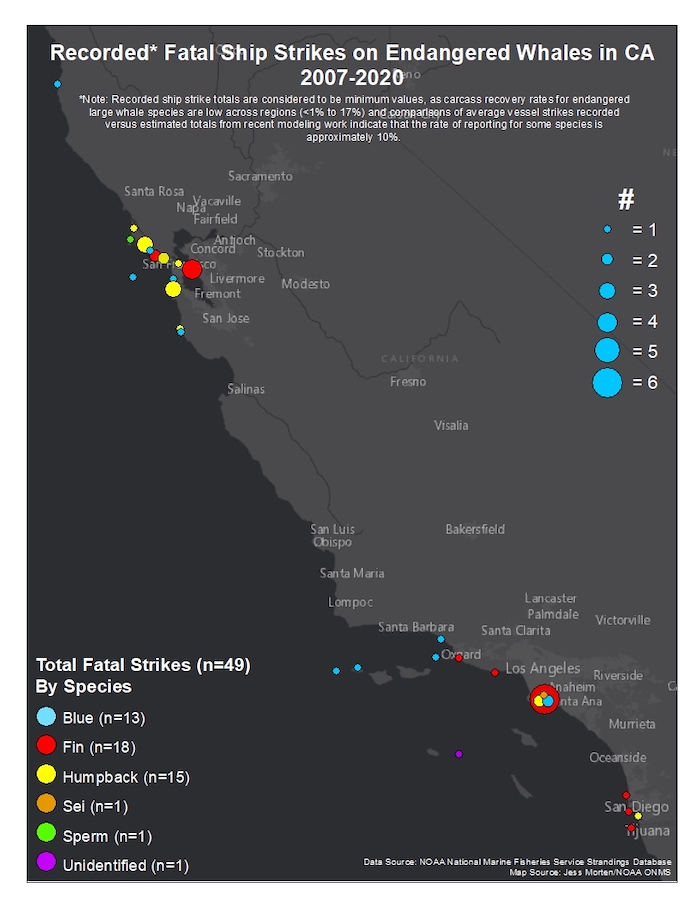
These ship strike deaths can be avoided, as strategically redefining shipping lanes to separate ships and whales and reducing large vessel speeds to 10 knots or less in areas of high whale activity have shown success in reducing fatal strikes in the areas where they have been implemented.
A major focus of this work is to reduce ship strike risk on endangered whales in California by increasing shipping industry cooperation levels with seasonal voluntary Vessel Speed Reduction (VSR) requests from NOAA and the U.S. Coast Guard in specified areas within and near the four California national marine sanctuaries – Greater Farallones, Cordell Bank, Monterey Bay, and Channel Islands – through targeted speed monitoring, communications, and engagement. Cooperation levels with NOAA voluntary speed requests have historically been low (<50% in both CA regions in early years), but have shown an increase (+19% in the San Francisco Bay region and +36% in the southern California zones from 2017-2020) following more targeted outreach and engagement with carrier companies and vessel operators.
Cooperation levels by large vessels with NOAA VSR requests were 64% from May 1 – November 15, 2020 in the San Francisco Bay region and 54% from May 15 – December 15, 2020 in the southern California region, up from 58% and 50% in 2019.
Maps of the 2021 NOAA Voluntary Vessel Speed Reduction zones, which are broadcast to vessel operators through the U.S. Coast Guard’s Local Notice to Mariners and through direct communications from NOAA (click to enlarge)
To motivate greater cooperation with the NOAA VSR requests, Greater Farallones Association and NOAA’s Channel Islands, Cordell Bank, and Greater Farallones national marine sanctuaries also partner with Santa Barbara County Air Pollution Control District, Ventura County Air Pollution Control District, the Bay Area Air Quality Management District, the California Marine Sanctuary Foundation, and The Volgenau Foundation to administer the Protecting Blue Whales and Blue Skies Incentive-Based Vessel Speed Reduction Program. Started in 2014, the partnership provides financial and positive press incentives to container and car carrier lines that voluntarily enroll and slow their fleets to 10 knots or less in the VSR zones to reduce the risk of ship strikes on endangered whales, air emissions, and underwater noise. In 2020, 16 global container and car carrier lines (up from 7 companies in 2014) enrolled in the effort and slowed their vessels to 10 knots or less for over 181,000 nautical miles within the VSR zones. Total cooperation by companies enrolled in the program has increased over the years, from 50% in 2018 to 68% in 2020 in the San Francisco Bay region and from 32% in 2018 to 59% in the southern California zone in 2020.
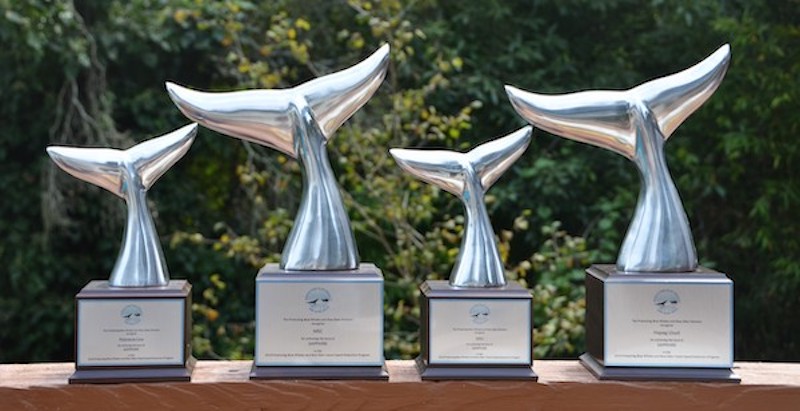
Photo of the Sapphire level awards from the 2019 Protecting Blue Whales and Blue Skies Program, which were given to MSC, Hapag Lloyd, GALI, and Polynesia Line, whose vessels reduced speeds to 10 knots or less for 75% or more of their total distance to protect endangered whales and reduce harmful coastal air emissions.
Learn more about this work on the Greater Farallones National Marine Sanctuary website or Channel Islands National Marine Sanctuary website.
Project Funders

